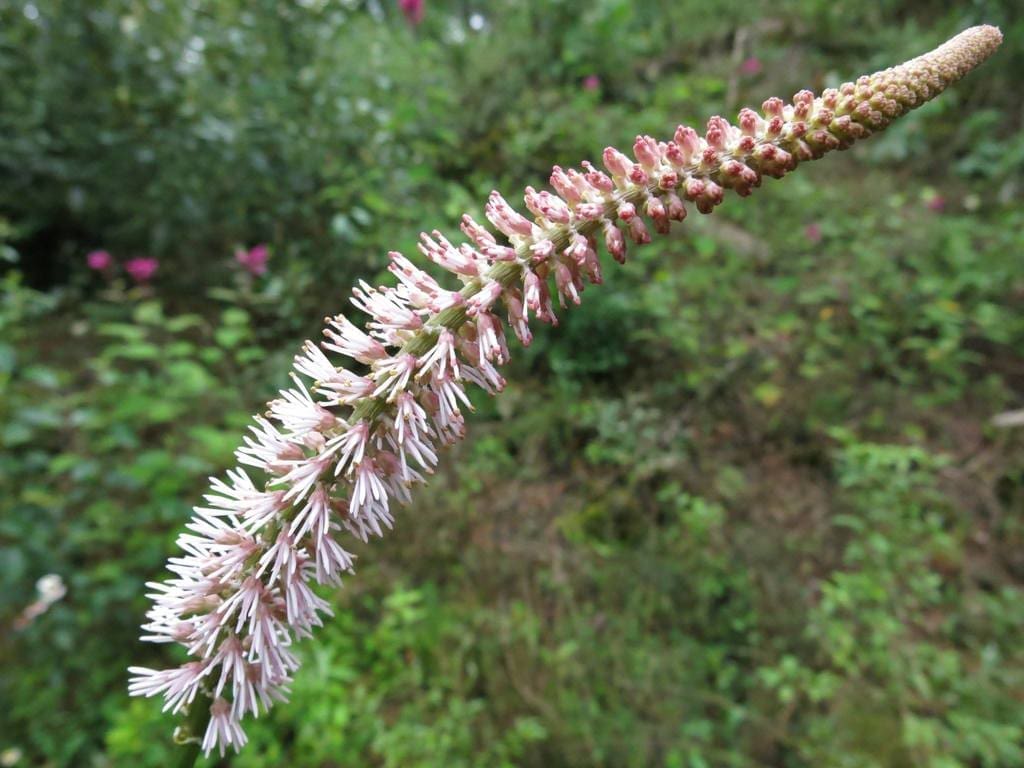
Sabadilla
Latin name: Schoenocaulon officinale (formerly Sabadilla officinarum)
Short name: Sabad
Common name: Cevadilla | Indian Snuff | Sabadilla Seed | Asagræa
Primary miasm: Psoric
Kingdom: Plants
Family: Melanthiaceae
- Symptomatology
- Remedy Information
- Differentiation & Application
Schoenocaulon officinale is a plant of the Melanthiaceae family. Its seeds contain the potent alkaloid veratrine, known for its severe irritant and emetic properties.
Formerly used as a vermifuge and insecticide; powdered seeds were once used as a snuff to provoke sneezing in nasal congestion.
Proved by Hahnemann and described in Materia Medica Pura, with further clinical experience added by Allen, Clarke, and Hering.
- Mucous membranes – particularly of the nose and throat
- Mind – fears, fixed ideas, delusions
- Stomach – nausea, parasitic sensation
- Nasal passages – spasmodic sneezing, coryza
- Rectum – parasitic, worm-like sensations
- Larynx and respiratory tract – tickling cough
- Skin – crawling, pricking, lice-like sensation
- Warm rooms
- Warm drinks
- Lying down
- Eating (temporarily)
- Wrapping up well
- Cold, dry air
- Open air
- Change of temperature
- Odours (especially flowers)
- Thinking about complaints
- Mental exertion
- Arsenicum album – Also anxious, chilly, and itchy, but more restlessness and burning pains
- Ignatia – Nervous system remedy with hysterical traits but more contradictory symptoms
- Cina – Worm remedy like Sabadilla, but more irritable and violent in children
- Lachesis – Left-sided, hypersensitive, but with loquacity and aggravation after sleep
- Natrum muriaticum – Sneezing and sadness, but more reserved, refined, and craving salt
- Complementary: Calcarea carbonica, Sepia
- Antidotes: Camphora, Pulsatilla
- Follows well: Cina, Spigelia
- Precedes well: Natrum muriaticum, Lycopodium
- Inimical: None noted
Sabadilla’s core theme is illusion and hypersensitivity — to smells, to illness, and to sensation. It is the remedy of the neurotic hypochondriac, convinced of worms, disease, or pregnancy in impossible circumstances. The body reacts with violent sneezing, crawling sensations, and hysterical tremors, while the mind fixates and obsesses. It is invaluable in treating hay fever, worm disorders, and psychosomatic ailments where delusion fuels pathology. Its field is where imagination becomes suffering, and sensitivity borders on torment.
- A leading remedy in hay fever with violent sneezing and left-sided coryza
- Effective in hypochondriacal states with fixed delusions
- Consider for worms, especially with rectal itching and grinding teeth
- Useful in nervous coughs triggered by tickling or odours
- May prevent recurrence of seasonal allergic rhinitis
Mind
- Delusion: pregnant, when emaciated
- Fear of illness, death
- Sadness with indifference
- Ritualistic, compulsive thinking
Nose
- Sneezing, violent, paroxysmal
- Coryza, left-sided
- Itching deep in nose
- Worse from odours
Skin
- Crawling, formication
- Itching, worse at night
- Sensation of insects
Rectum
- Worms, sensation of
- Itching, crawling
- Ineffectual urging
Generalities
- Left-sided
- Worse from cold, odours
- Hypersensitive
Samuel Hahnemann – Materia Medica Pura: Primary proving, including mental delusions and sneezing
T.F. Allen – Encyclopaedia: Comprehensive coverage of nervous, gastric, and parasitic symptoms
John Henry Clarke – Dictionary of Practical Materia Medica: Vivid accounts of mental and parasitic themes
William Boericke – Pocket Manual: Clinical focus on hay fever, worms, and nervous system
C. Hering – Guiding Symptoms: Confirmed characteristic modalities and delusions
